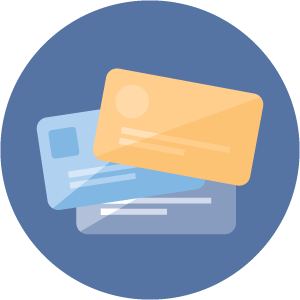Choose the right card for your situation
- English
- Español
Prepaid cards have different features, functions, and fees. To decide which prepaid card is right for you, learn about your choices. Compare the fees to how you will use the card.

How do you plan to use your card?
- Will you use the card regularly or only for some things?
- Will you only make purchases, or also use the card for cash withdrawals or bill payments?
- Will you have your paycheck or benefits directly deposited onto the card?
Questions to consider when choosing a card
Don't forget to register your card!
It’s a good idea to register your prepaid card. Registration will provide you with more protections if your card is lost or stolen. Some prepaid card providers may require you to register your card and verify your identity when you buy or receive the prepaid card, or soon after. The card provider likely will limit how you can use the card until the card is registered.
Registration is also necessary for FDIC or NCUA insurance (if it is offered for your card), which protects you if the bank or credit union issuing your card goes out of business.
